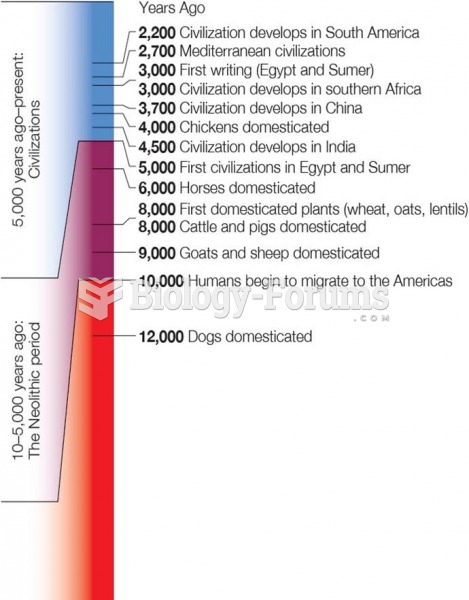|
|
|
Vaccines cause herd immunity. If the majority of people in a community have been vaccinated against a disease, an unvaccinated person is less likely to get the disease since others are less likely to become sick from it and spread the disease.
This year, an estimated 1.4 million Americans will have a new or recurrent heart attack.
In most cases, kidneys can recover from almost complete loss of function, such as in acute kidney (renal) failure.
People often find it difficult to accept the idea that bacteria can be beneficial and improve health. Lactic acid bacteria are good, and when eaten, these bacteria improve health and increase longevity. These bacteria included in foods such as yogurt.
More than 30% of American adults, and about 12% of children utilize health care approaches that were developed outside of conventional medicine.







